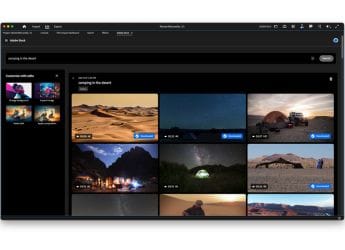- Home
- Science
- Science News
- NASA Adds More Safety Fixes for Boeing's Starliner Crew Capsule
NASA Adds More Safety Fixes for Boeing's Starliner Crew Capsule
NASA officials said Tuesday they have now identified 80 corrective actions that must be done before the Boeing Starliner capsule launches again.

During its space debut last December with no one on board, the Starliner ended up in the wrong orbit
NASA has added more safety fixes for Boeing's space capsule before it can fly astronauts following a pair of close calls during last year's test flight.
In closing out the seven-month investigation, NASA officials said Tuesday they have now identified 80 corrective actions, mostly involving software and testing, that must be done before the Starliner capsule launches again. The previous count was 61.
“It's a bit of a wake-up call for NASA and its contractors” across the board, said Steve Stich, manager of NASA's commercial crew program.
During its space debut last December with no one on board, the Starliner ended up in the wrong orbit and could not reach the International Space Station. Ground controllers barely had time to solve another software problem that could have destroyed the capsule at flight's end.
Boeing will repeat the flight later this year before attempting to launch astronauts next spring.
SpaceX, meanwhile, successfully launched two NASA astronauts to the space station in May. They will return home next month aboard their Dragon capsule, splashing down off the Florida coast.
In hindsight, NASA did not focus enough on the software portion of the Boeing flight, Stich said. The space agency instead probably concentrated more on SpaceX because of its non-traditional approach to software development, he acknowledged.
Boeing had plenty of experience working on large NASA projects like the space shuttle and space station, and so NASA was “a little more used to the Boeing process," Stich said.
“It's often natural for a human being to spend more time on that newer approach, and maybe we didn't quite take the time we needed with the more traditional approach,” he added.
NASA has since added more of its own staff to monitor software development at both Boeing and SpaceX.
NASA is also borrowing SpaceX's “robust” approach to software, which involves going back to the designers following testing for feedback, said Kathy Lueders, NASA's new human spaceflight chief who until a month ago managed commercial crew. She wants to see more of that type of approach across other NASA programs.
Boeing will need several more months to complete its software upgrades and tests before repeating the first test flight, officials said. SpaceX plans to launch a second crew later this summer or early fall.
“This has been a big learning experience for us,” Lueders said.
Why do Indians love Xiaomi TVs so much? We discussed this on Orbital, our weekly technology podcast, which you can subscribe to via Apple Podcasts, Google Podcasts, or RSS, download the episode, or just hit the play button below.
Catch the latest from the Consumer Electronics Show on Gadgets 360, at our CES 2026 hub.
Related Stories
- Samsung Galaxy Unpacked 2025
- ChatGPT
- Redmi Note 14 Pro+
- iPhone 16
- Apple Vision Pro
- Oneplus 12
- OnePlus Nord CE 3 Lite 5G
- iPhone 13
- Xiaomi 14 Pro
- Oppo Find N3
- Tecno Spark Go (2023)
- Realme V30
- Best Phones Under 25000
- Samsung Galaxy S24 Series
- Cryptocurrency
- iQoo 12
- Samsung Galaxy S24 Ultra
- Giottus
- Samsung Galaxy Z Flip 5
- Apple 'Scary Fast'
- Housefull 5
- GoPro Hero 12 Black Review
- Invincible Season 2
- JioGlass
- HD Ready TV
- Laptop Under 50000
- Smartwatch Under 10000
- Latest Mobile Phones
- Compare Phones
- Red Magic 11 Air
- Honor Magic 8 RSR Porsche Design
- Honor Magic 8 Pro Air
- Infinix Note Edge
- Lava Blaze Duo 3
- Tecno Spark Go 3
- iQOO Z11 Turbo
- OPPO A6c
- Lenovo Yoga Slim 7x (2025)
- Lenovo Yoga Slim 7a
- Lenovo Idea Tab Plus
- Realme Pad 3
- Moto Watch
- Garmin Quatix 8 Pro
- Haier H5E Series
- Acerpure Nitro Z Series 100-inch QLED TV
- Asus ROG Ally
- Nintendo Switch Lite
- Haier 1.6 Ton 5 Star Inverter Split AC (HSU19G-MZAID5BN-INV)
- Haier 1.6 Ton 5 Star Inverter Split AC (HSU19G-MZAIM5BN-INV)







![[Sponsored] Haier C90 OLED TV | Dolby Vision IQ, 144Hz OLED and Google TV in Action](https://www.gadgets360.com/static/mobile/images/spacer.png)









